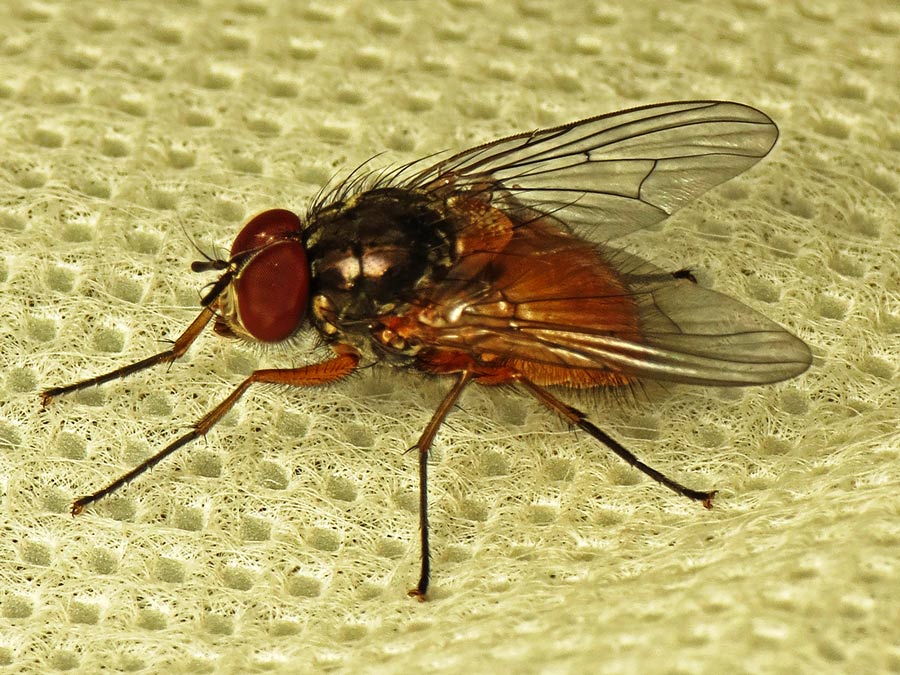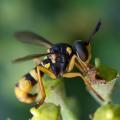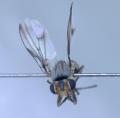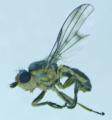Diptera.info :: Identification queries :: Diptera (adults)
Who is here? 1 guest(s)
|
Muscid?? Suffolk, UK
|
|
| Martin Cooper |
Posted on 25-02-2015 01:09
|
|
Member Location: Ipswich, Suffolk Posts: 628 Joined: 01.05.12 |
Please help me identify this fly which I raised from a maggot brought indoors with some rotting Honey Fungus. I have several photos of it which I will post below. Best wishes, Martin First the maggot. This may not be the exact maggot which turned into this fly as there were several and I didn't separate them. Martin Cooper attached the following image:  [142.56Kb] |
|
|
|
| Martin Cooper |
Posted on 25-02-2015 01:09
|
|
Member Location: Ipswich, Suffolk Posts: 628 Joined: 01.05.12 |
pupa
Martin Cooper attached the following image:  [138.62Kb] |
|
|
|
| Martin Cooper |
Posted on 25-02-2015 01:10
|
|
Member Location: Ipswich, Suffolk Posts: 628 Joined: 01.05.12 |
adult
Martin Cooper attached the following image:  [144.44Kb] |
|
|
|
| Martin Cooper |
Posted on 25-02-2015 01:11
|
|
Member Location: Ipswich, Suffolk Posts: 628 Joined: 01.05.12 |
dorsal view
Martin Cooper attached the following image:  [141.91Kb] |
|
|
|
| Martin Cooper |
Posted on 25-02-2015 01:12
|
|
Member Location: Ipswich, Suffolk Posts: 628 Joined: 01.05.12 |
rear view
Martin Cooper attached the following image:  [134.86Kb] |
|
|
|
| Martin Cooper |
Posted on 25-02-2015 01:12
|
|
Member Location: Ipswich, Suffolk Posts: 628 Joined: 01.05.12 |
face
Martin Cooper attached the following image:  [139.18Kb] |
|
|
|
| Martin Cooper |
Posted on 25-02-2015 01:18
|
|
Member Location: Ipswich, Suffolk Posts: 628 Joined: 01.05.12 |
Now some images of a pinned specimen, a male.
Martin Cooper attached the following image:  [146.18Kb] |
|
|
|
| Martin Cooper |
Posted on 25-02-2015 01:19
|
|
Member Location: Ipswich, Suffolk Posts: 628 Joined: 01.05.12 |
legs
Martin Cooper attached the following image:  [143.99Kb] |
|
|
|
| Martin Cooper |
Posted on 25-02-2015 01:20
|
|
Member Location: Ipswich, Suffolk Posts: 628 Joined: 01.05.12 |
lateral view of whole fly
Martin Cooper attached the following image:  [142.8Kb] Edited by Martin Cooper on 25-02-2015 01:22 |
|
|
|
| Martin Cooper |
Posted on 25-02-2015 01:23
|
|
Member Location: Ipswich, Suffolk Posts: 628 Joined: 01.05.12 |
side view of thorax and head
Martin Cooper attached the following image:  [146.53Kb] |
|
|
|
| Martin Cooper |
Posted on 25-02-2015 01:23
|
|
Member Location: Ipswich, Suffolk Posts: 628 Joined: 01.05.12 |
face
Martin Cooper attached the following image:  [147.11Kb] |
|
|
|
| Martin Cooper |
Posted on 25-02-2015 01:26
|
|
Member Location: Ipswich, Suffolk Posts: 628 Joined: 01.05.12 |
Dates: maggot 18 Jan 2015 pupa 26 Jan 2015 adult 16 Feb 2015 |
|
|
|
| Stephane Lebrun |
Posted on 25-02-2015 21:12
|
|
Member Location: Le Havre, France Posts: 8248 Joined: 03.03.07 |
Phaonia subventa. 
Stephane. |
|
|
|
| Martin Cooper |
Posted on 01-03-2015 19:55
|
|
Member Location: Ipswich, Suffolk Posts: 628 Joined: 01.05.12 |
Thanks Stephane. Apologies for delayed response - I've been away. Best wishes, Martin |
|
|
|
| Martin Cooper |
Posted on 01-03-2015 20:01
|
|
Member Location: Ipswich, Suffolk Posts: 628 Joined: 01.05.12 |
I didn't remember it from last year... http://www.dipter...ta%3F.html |
|
|
|
| oceanlis2000 |
Posted on 05-03-2015 16:20
|
|
Member Location: Wales, UK Posts: 570 Joined: 15.06.10 |
Interesting to see the larvae Martin and that you found it in a fungus- how did you look after it to pupation etc
Dr Elisabeth A. Harris @FloraConsUK |
|
|
|
| Martin Cooper |
Posted on 05-03-2015 20:07
|
|
Member Location: Ipswich, Suffolk Posts: 628 Joined: 01.05.12 |
Thanks for your interest Elizabeth. This is what I did... I spooned some of the rotted fungus into a plastic bag and brought it home. Then I kept it in the bag opening it from time to time to let some fresh air in, and to photograph the larvae and then the pupae. Then when the adults emerged I transferred them into a fabric bag with a plastic window in the front. I can't remember what this was sold as, but I have used it as an insect house from time to time! I added a damp tissue with water and some honey on it which they visited frequently. I sacrificed one male fly to photograph. I was hoping that the remaining 4 adults which eeventually emerged might lay eggs in some old mushrooms and the remains of the original honey fungus, but no signs so far. A couple of the adults have now died. I'm not an expert so have assumed that the larvae, pupae and adults are all of the same species simply because they were all found in on or around the honey fungus. Best wishes, Martin |
|
|
|
| oceanlis2000 |
Posted on 06-03-2015 15:53
|
|
Member Location: Wales, UK Posts: 570 Joined: 15.06.10 |
Thanks very much Martin. I am hoping to find a few myself this year so you have given me some ideas on how to proceed!
Dr Elisabeth A. Harris @FloraConsUK |
|
|
|
| andrzej grzywacz |
Posted on 07-03-2015 23:23
|
|
Member Location: Poland Posts: 103 Joined: 09.02.08 |
Phonia larvae are obligatory predators, thus you would need some larval prey to breed them. I have tried with M. domestica and some Calliphora of different age but without success. |
|
|
|
| Martin Cooper |
Posted on 08-03-2015 00:04
|
|
Member Location: Ipswich, Suffolk Posts: 628 Joined: 01.05.12 |
Thanks Andrzej, There must have been a few other larvae in with them. I noticed a few Psychodidae and a larger Nematocera emerge while I was waiting to see what was in the larger pupae. |
|
|
|
| Jump to Forum: |














